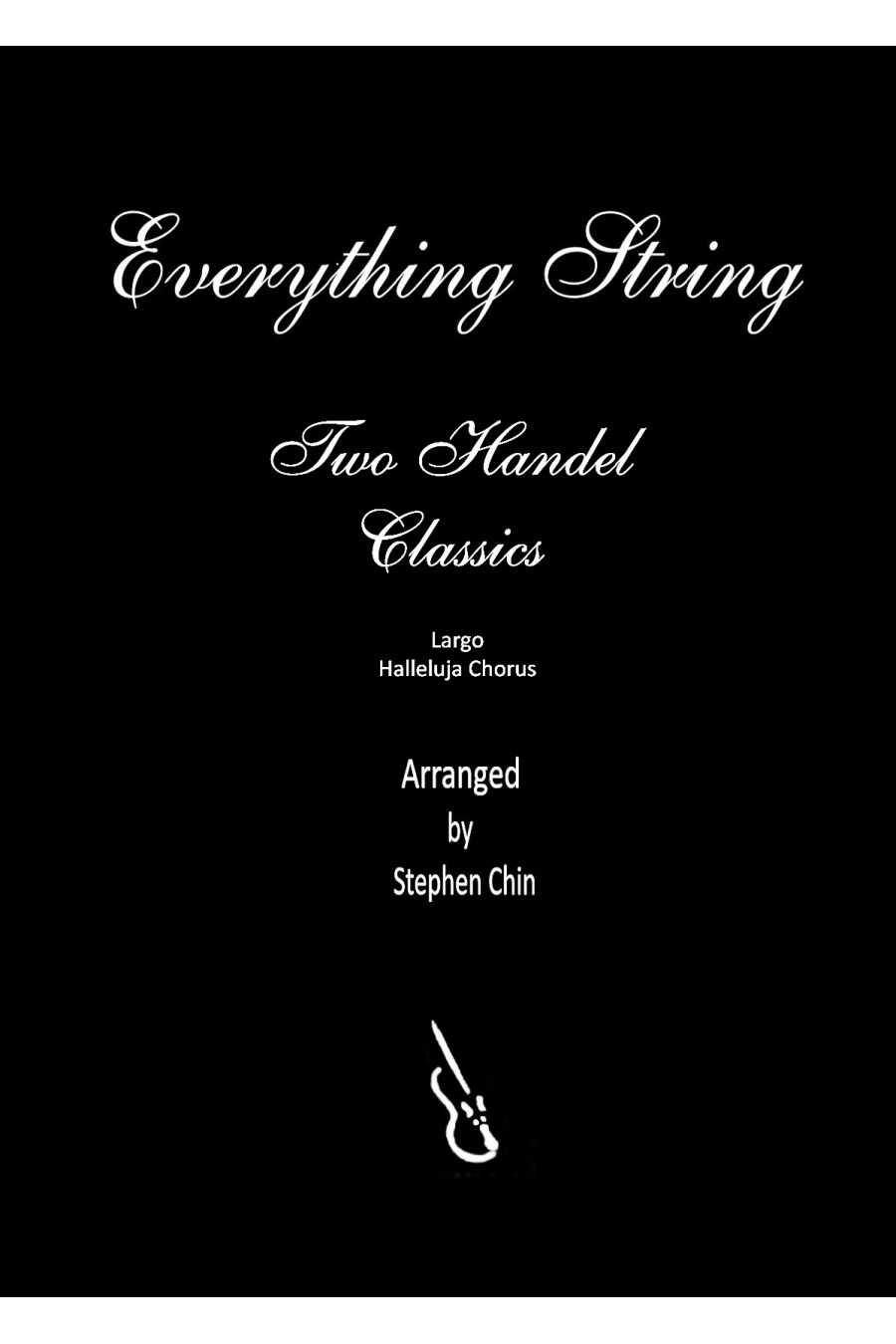

Handel's famous works, "Largo" and "Hallelujah Chorus," are presented together. "Largo" explores Baroque arioso sonorities, while the Hallelujah Chorus is the most renowned chorus ever written. All parts have been adapted to retain the original antiphonal effect between the chorus and orchestra.
1. Largo
2. Halleluja Chorus
For Grade 3.5 String Orchestra
Experience the beauty of Handel's timeless masterpieces as they come together in perfect harmony. The "Largo" piece takes you on a journey through the rich and intricate sonorities of the Baroque arioso, with a gentle and soothing melody that flows seamlessly from one part to another. Meanwhile, the Hallelujah Chorus stands as a testament to Handel's genius, with its powerful and uplifting melody that has become one of the most famous choruses ever written. Every part of this masterpiece has been carefully adapted to retain the original antiphonal effect between the chorus and orchestra, ensuring that you get to experience the full grandeur of Handel's vision.
1. Largo
2. Halleluja Chorus
For Grade 3.5 String Orchestra
This music game is excellent for elementary programs, offering imaginative titles like “The Still Before the Storm” and “Fairy Floss”. It teaches students about keys, orchestral textures, and various techniques in an accessible way, promoting an early appreciation of music's tone color.
1. Gekko Echo
2. Still before the Storm
3. Jumpin' Jumbucks
4. Valse Sentimentale
5. Rickshaw Rally
6. Morning Star
7. Fairy Floss
8. March of the Stick Insects
9. Sunset Sarabande
10. Riding the Rapids
11. Hiccups
12. Sleepy Sandman
13. Ostinato Odyssey
14. A Stately Minuet
15. Bubbles
16. Fiddle Stick Fury
For String Orchestra Grade 1
We all love our pets, and each day brings new adventures! “Presto Puppies” features rising scale patterns and surprising dissonances, while “Cantabile Kitties” captures the subdued essence of our feline friends with major seventh intervals that evoke a kitten yawning. “Con Brio Birdies” portrays birds’ chatter through repeated quavers and gentle dissonances. The suite also showcases various techniques, including harmonics and different pizzicato styles.
Telemann was a prolific composer, creating over 3000 works, including 100 concertos, 40 operas and numerous chamber music pieces. The Siciliano and Allegro movements from his violin sonatas showcase contrasting Baroque styles and are great for developing phrasing and articulation.
For String Orchestra Grade 3
As you journey through a tropical rainforest, you can experience wonderment and awe reflected in these three miniatures. Each piece offers a different mood and tone colour for players to explore. The techniques used in these miniatures, including pizzicato, sustained notes, double quavers, and left-hand pizzicato, are easy to tackle, even for young musicians with limited experience.
1. Leaping Frogs
2. Creeping Vines
3. Fun at the Falls
For String Orchestra Grade 1
Lux Angelis is an advanced string orchestra piece with optional grade 1 and 2 strings, keyboard, and percussion. It represents light pervading the universe through harmonics and suspended chords. The seventh interval symbolizes the seven days of creation, while the two sections portray the challenges of dark forces. The piece ends with a chorus of angels bathed in light, symbolizing light's resilience.
Scotland offers diverse experiences. Skye Island has willow trees amidst breathtaking landscapes. Fiddlin' in Aberdeen is inspired by vibrant fiddle festivals. The piece features left-hand pizzicato, harmonics, and string crossings.
1. Willows of Skye
2. Fiddlin' in Aberdeen
For String Orchestra Grade 1
This suite of three contrasting movements is perfect for young string players. It includes fun techniques like tremolo, pizzicato, harmonics, tapping, and even screaming. Bumps in the Dark is thrilling, Far Away Dreams is gentle and thoughtful, and Shooting Stars is exciting. The suite encourages active listening within the ensemble.
Listen to #1 – Bumps in the Dark